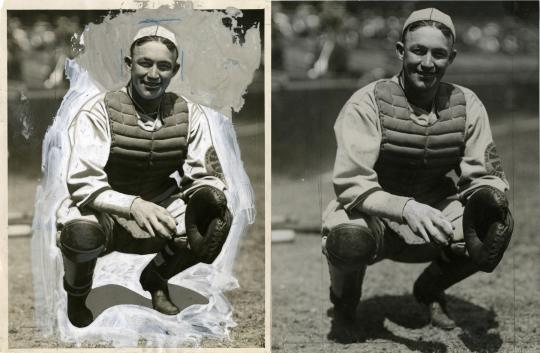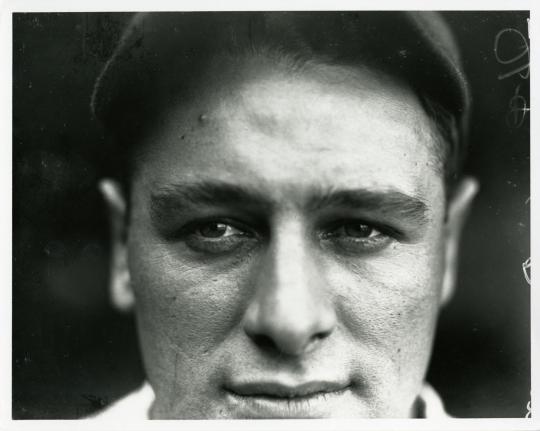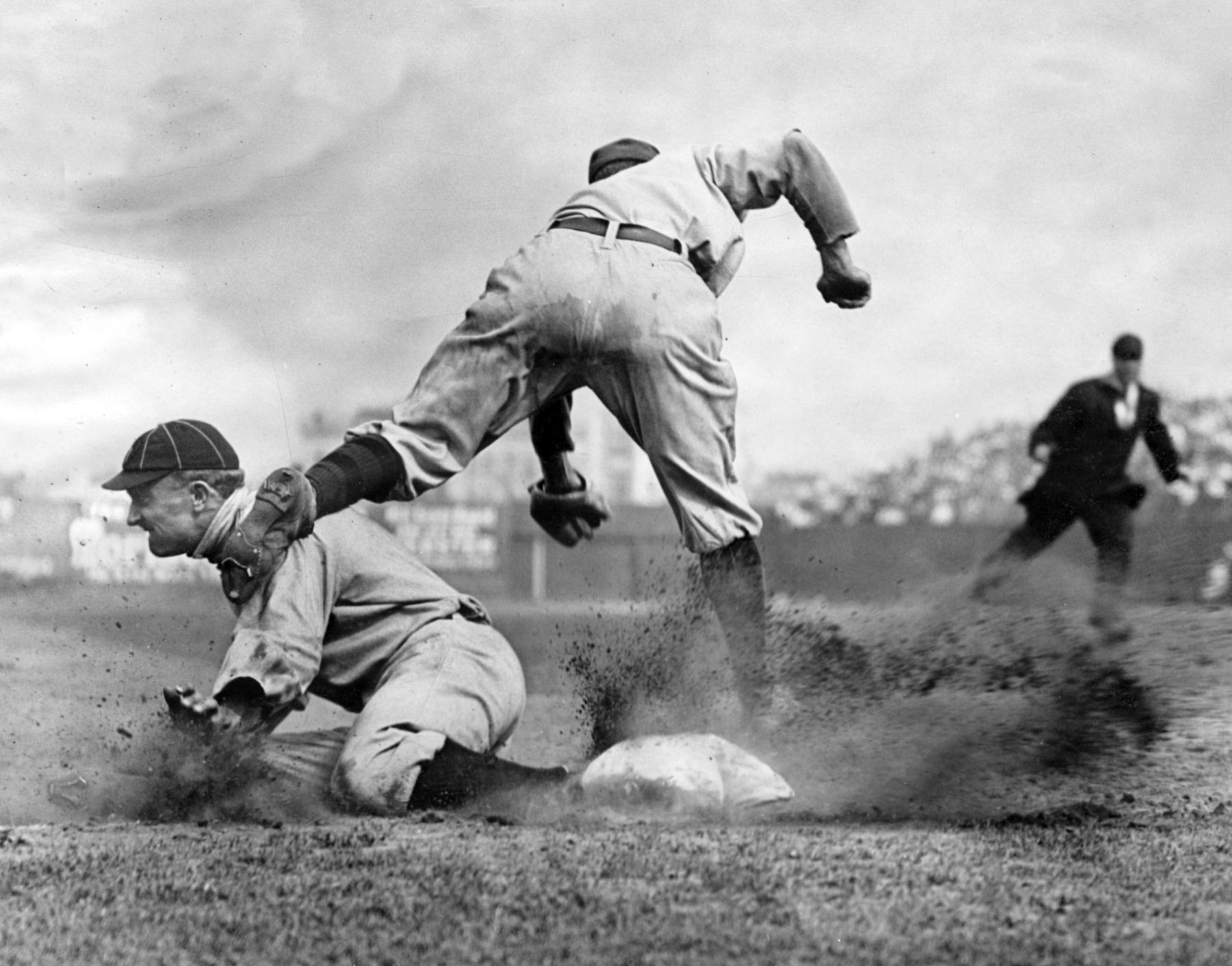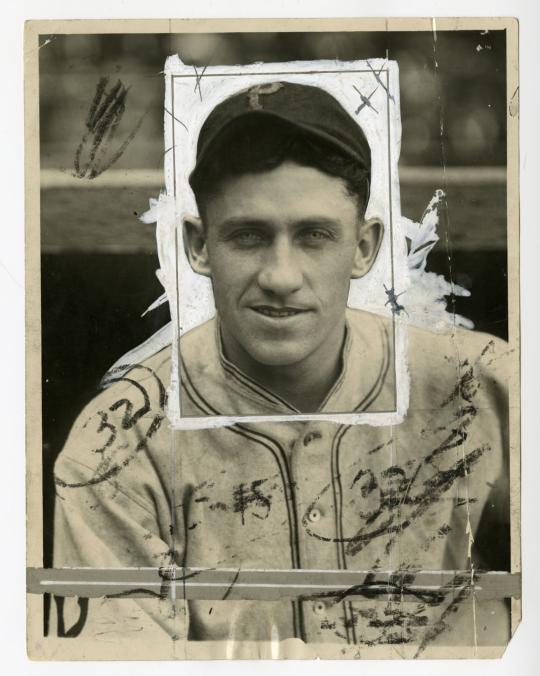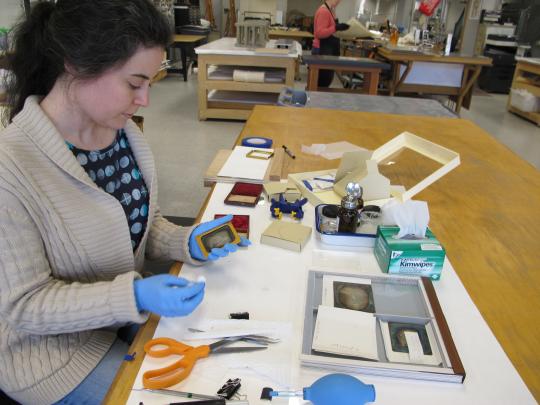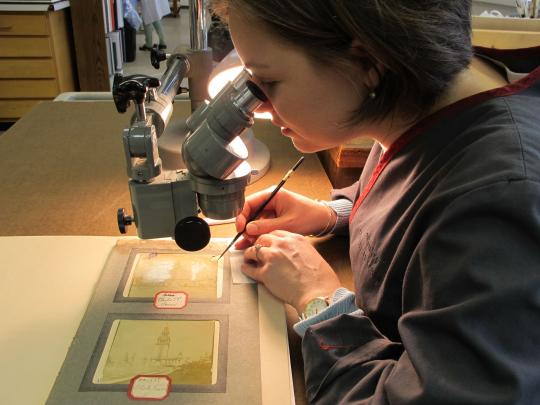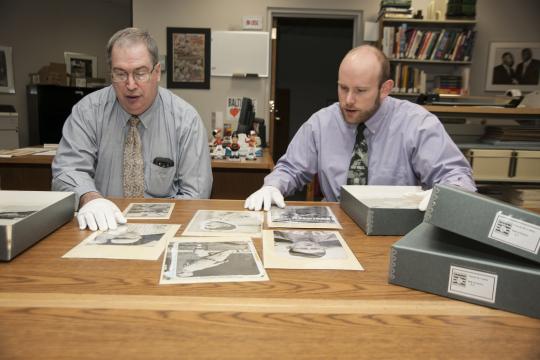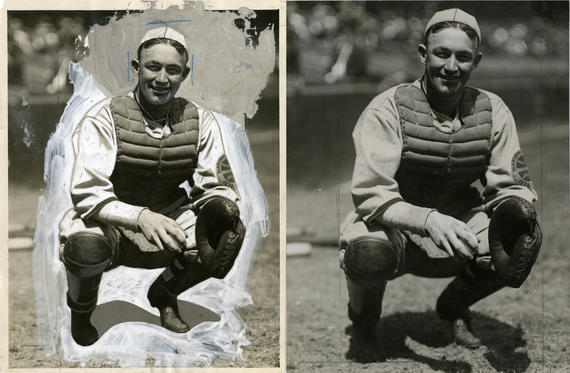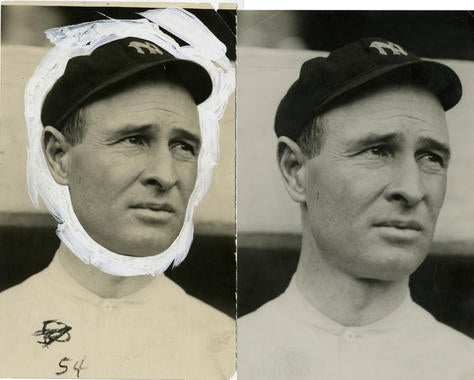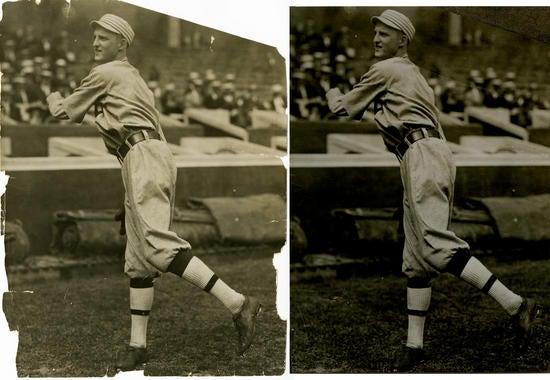“When you store them in the right temperature and humidity, they’re going to be around for at least another 100 years.”
Conlon photos become truly timeless
“It was a precursor to photo-editing on the computer,” says Monique Fischer.
With the aesthetic task of bringing back the images’ original views complete, Fischer turned her focus on stabilizing the photos and enhancing their physical durability. The rips and tears were mended with Usu Mino, a near-invisible Japanese paper that is affixed on the reverse of the photo with wheat starch paste.
And now that the visual ethos of these photos have been brought back to life, they can live on in virtual perpetuity through the Hall of Fame Digital Archive Project, which aims to digitize the Museum collections and Library archive and offer fans on-line access to more than 150 years of baseball history.
Matt Kelly was the communications specialist at the National Baseball Hall of Fame and Museum
Reproductions
The National Baseball Hall of Fame and Museum features a collection of nearly 250,000 photographs like this one. Reproductions are available for purchase. To purchase a reprint of this photograph or others from the Photo Archive collections, please email photoarchives@baseballhall.org. Hall of Fame members receive a 10-percent discount.

